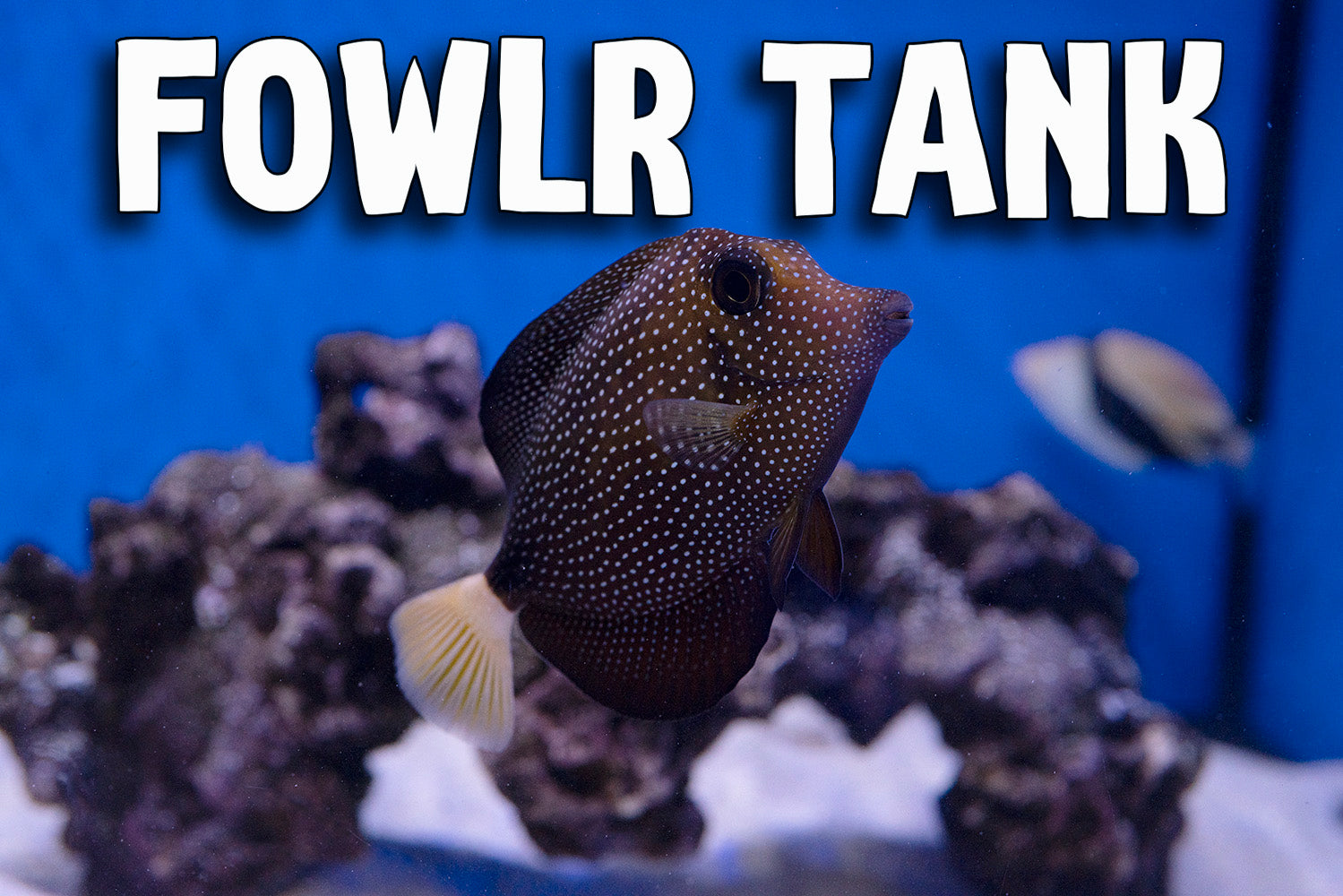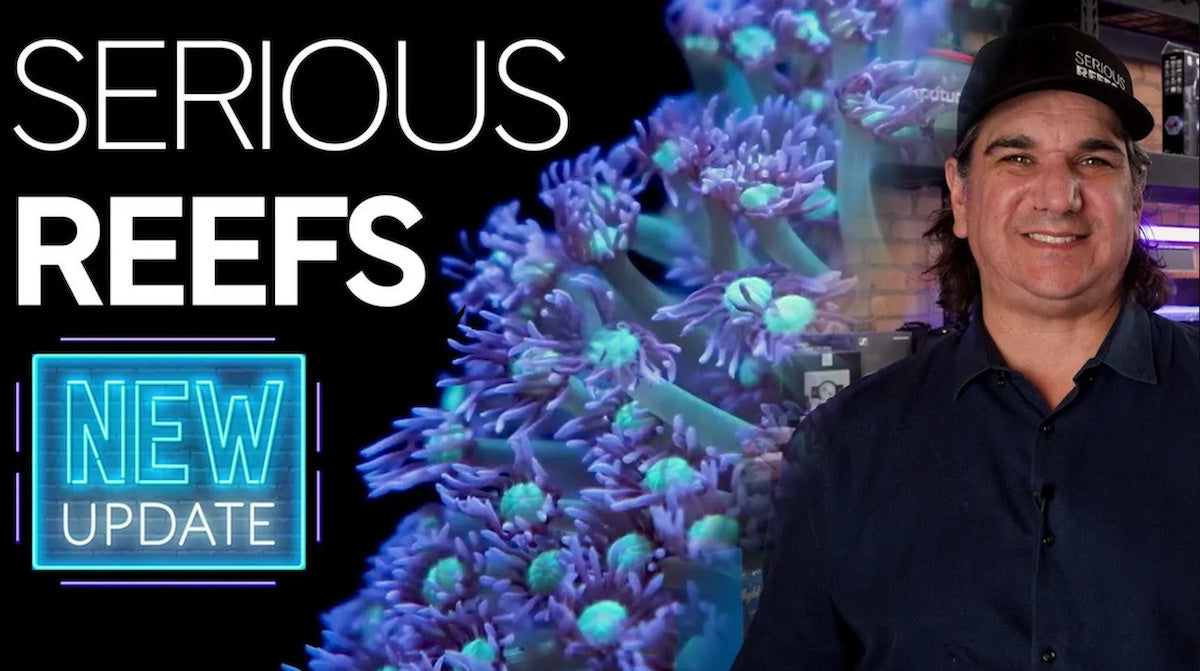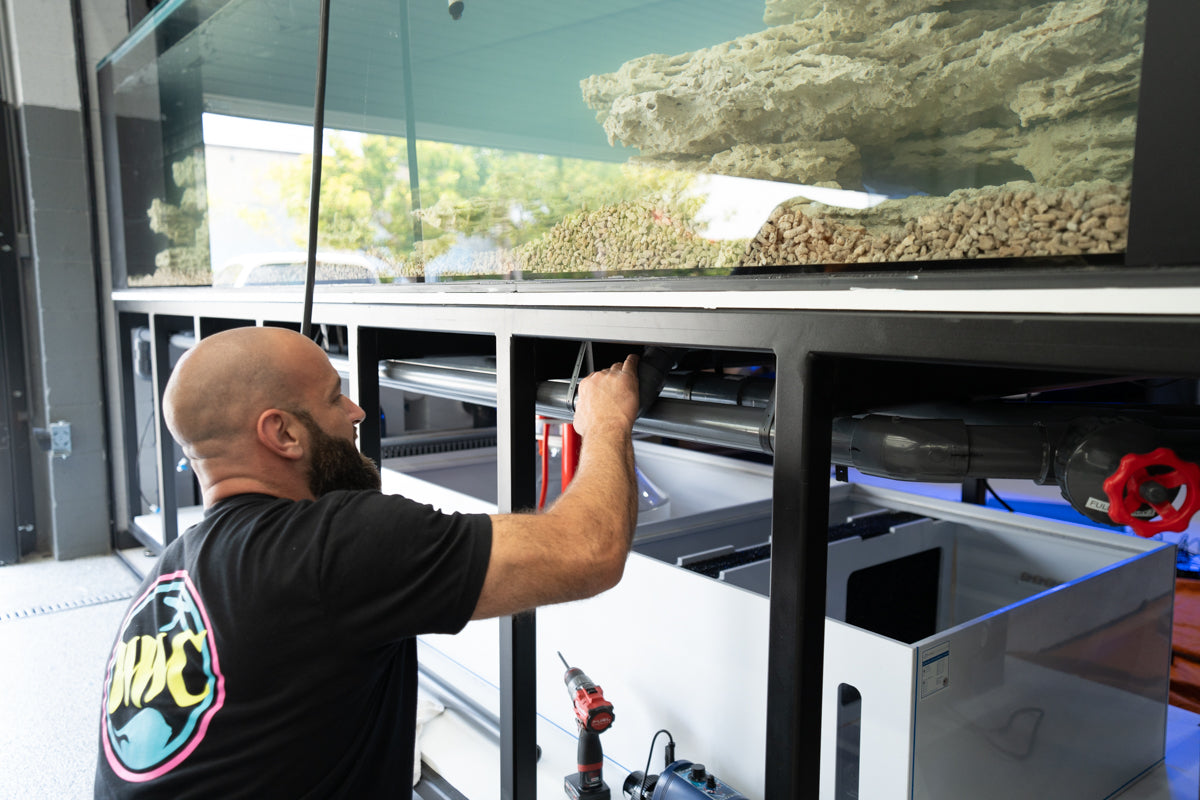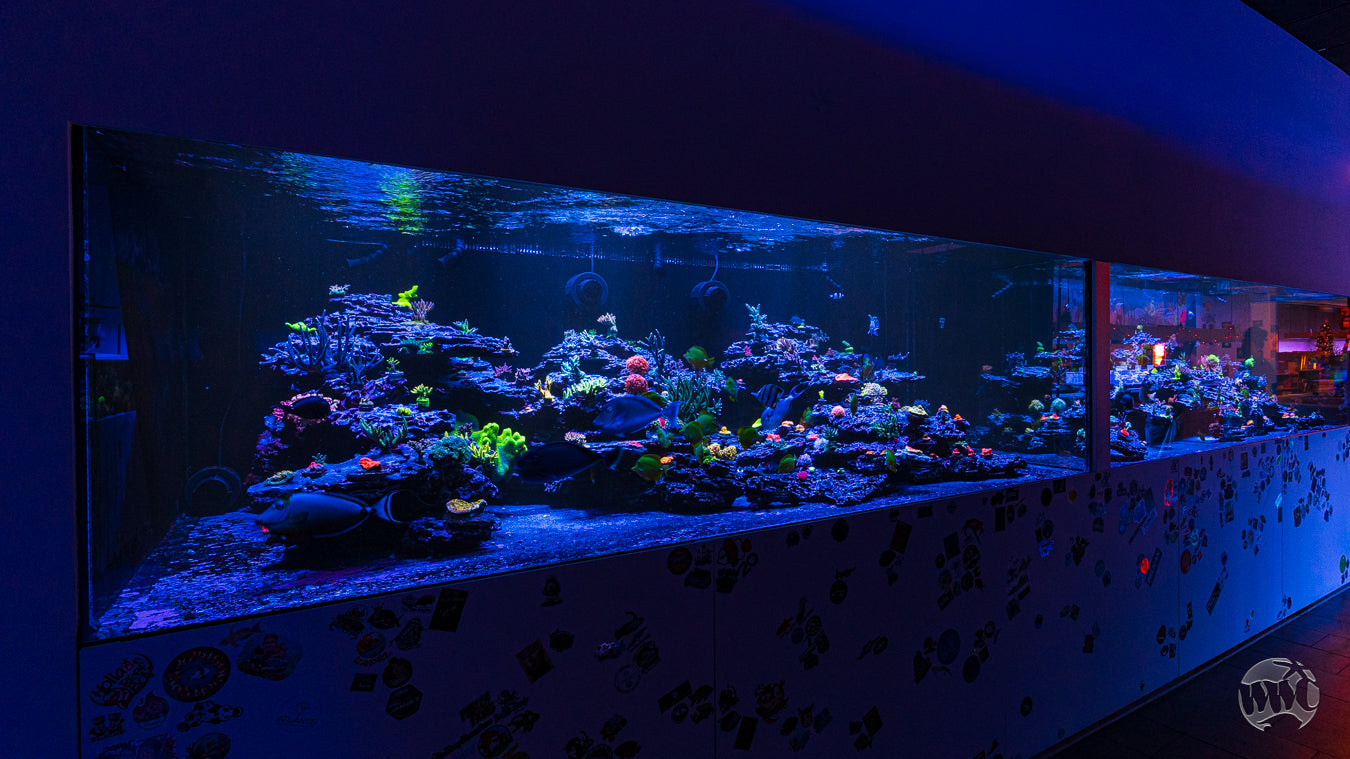Imagine this- You walk into a friend's house and as soon as you get through their front door you are greeted by a large aquarium with some arching purple rocks. Swimming quickly back and forth in front of you, trying to get your attention, is a fish with the largest puppy dog eyes. When you ask what kind of fish it is, your friend replies, telling you it's a porcupine puffer, who can inflate its body multiple times its size when stressed but rarely does.
"Want to see something cool? Watch this!" Your friend goes to the kitchen, returns with a few pieces of shrimp, and opens the lid to the tank. Before you can blink, the puffer fish is at the surface, excitedly spitting water, as your friend lowers a piece of the shrimp into the water and the little fish quickly swims over and eats it straight out of your friend's hand! Your friend offers the puffer the last of the shrimp and closes the lid. As you both walk to leave, the fun little fish, with a now full belly, follows you, swimming down the length of the tank. What you have just gotten to experience is one of the many ways that FOWLR tanks bring joy to those who see them.
In the saltwater aquarium hobby, a quick search on social media can leave you with a feed that is inundated with photos of gorgeous reef tanks, possibly leaving you to believe that a coral reef tank is the only option for keeping a saltwater aquarium. Although coral reef tanks are colorful slices of the ocean, there is just as much joy that can come from FOWLR tanks.
FOWLR stands for Fish Only With Live Rock. There are numerous species of charismatic fish who are corallivores (coral eaters) and as a result are not reef safe, but perfect species to keep in a FOWLR tank. FOWLR tanks are a great way for beginners to gain experience in keeping a saltwater aquarium.
Aside from the fish and live rock, what does a FOWLR tank look like? One difference you may notice between a reef tank and a fish only system is the size. While reef tanks can range in size from several thousand gallons down to tiny 1 gallon pico tanks, FOWLR tanks are bit more limited in size and are usually no smaller than 55 gallons in size. The main reason for this is because of the fish species that are kept in them. Fish, you might commonly see in a FOWLR tank include (but are not limited to) Triggerfish, Pufferfish, Angelfish, Lionfish, larger Wrasses, Eels, and some of the more aggressive species of reef safe fish like Purple Tangs. Many of the fish listed tend to be fairly messy, enthusiastic eaters and as such, the filtration you might find the sump on a fish only tank would include things like roller filters, protein skimmers, and even UV sterilizers.
Inside the tank there will usually be some form of substrate, its size depending on the species that are being kept in the tank. If there are fish who bury themselves in the sand at night to sleep, it might be a finer sized sand, if not it can be anywhere from 1.5mm up to small rubble pieces. On top of the substrate is where the rockwork will sit. When it comes to rockscapes in tanks, there are a few different types that work well in FOWLR tanks and not all of them start out as live. Some fish only systems will be started using dry rock, that over time, will grow different kinds of encrusting algae like the purple coralline algae. LFS's (Local Fish Stores) will often sell cultured live rock that has been dosed and contains live bacterial cultures. The last example of live rock you might find is the wild harvested. This rock, like the cultured rock, is truly alive and often comes with bits of algae (both good and bad), microorganisms, amphipods, and even small shrimp and crabs.
For many people, the joy of keeping a fish only with live rock tank comes from the species of fish they are able to keep, but it's not just the fish. Having a FOWLR tank opens up the option for several fascinating invertebrate species like Giant Hermit Crabs, Decorator Crabs, and Peacock Mantis Shrimp. Other species you may find in a FOWLR tank are Eels. While many of them are considered reef safe species, they often tend to be clumsy and are notorious for eating cleanup crew members, which makes them a perfect fit for a FOWLR tank where they can be spoiled and hand fed.
If you were to make a list of the pros and cons of keeping a FOWLR tank, the pros far outweigh the cons. When it comes to fish only systems, there can be significant cost savings in both the equipment needed and the livestock. Fish only tanks will still need the basics (heater, filter, and return pump), as well as a skimmer, but when it comes to lighting, because you aren't growing corals, you don't need the top-of-the-line fixtures like you would have on a reef tank. In a FOWLR tank, since there are only fish and not coral, you will be saving a good deal of money, as corals can range from $10 up to several thousand depending on the size and rarity. If you are a beginner, the initial setup costs for the tank, equipment, and fish can be as intimidating as the system itself, but FOWLR tanks are much more forgiving. Many fish species tend to be heartier than corals and will tolerate fluctuations in water parameters much better, which makes fish only systems a great place for new hobbyists to start and build their skill set and confidence.
So many of the fish that are kept in Fish Only With Live Rock tanks are incredibly charismatic and almost like underwater puppy dogs. They act excited to see you, follow you around the tank, will spit water to let you know they want food, and even allow you to pet and train them. Many will get a bad rap when they are kept in reef tanks as they will knock over corals, sometimes eating them, snack on cleanup crews, and even harassing their tank mates, but when kept in FOWLR tanks that cater to their needs, there are very few, if any, issues. As previously mentioned, many of the animals kept in FOWLR tanks can get large. In addition to having a large tank, their food often tends to be a bit larger than the average pellet or frozen cube. Triggers, eels, puffers, large invertebrates, larger wrasses, and angels will often eat large chunks of shrimp, clams, scallops, and silversides. This type of seafood can sometimes be hard to find, and slightly more expensive than regular fish food, but the larger meaty pieces make it easy to target train and hand feed your aquatic pets, ensuring they are getting the nutrition they need.
If you aren't yet sold on getting a FOWLR tank, maybe some of the following fish will change your mind, because after all, the fish are the key focus of these tanks.
Puffers - If there was ever a reason to get a FOWLR tank, it would be for a pufferfish. With their large galaxy eyes and the way they follow you as you move around the tank, they truly are some of the best fish you can keep. Keep in mind, several of them, like the Porcupine (Diodon holocanthus), Stars and Stripes (Arothron hispidus), Dogface (Arothron nigropunctatus), Golden (Arothron melegris), and Scribbled (Arothron mappa), tend to get fairly large so you will need a big tank, especially when they are full grown. There are other puffers like the Valentini (Canthigaster valentini), Blue Spotted (Canthigaster solandri), and the Sharpnose (Canthigaster punctatissima), who will stay smaller if you don't have space for a larger tank. If there is one fish who will make you fall in love with aquarium keeping, it is undoubtedly a pufferfish.
Triggerfish - Just as curious as pufferfish are triggerfish. Aquarists have been known to feed them by hand and more than that, have taught them tricks like 'roll over'. These fish aren't as brightly colored as some of the other fish on this list, but their patterns and personalities more than make up for it. Triggerfish have thick rigid spines they can rapidly extend which allow them to lock themselves in place, usually in between rocks. Consider adding a triggerfish like the Melichthys vidua (Pinktail Triggerfish), Rhinecanthus aculeatus (picasso or Humu Triggerfish), the vivid Odonus niger (Niger TriggerFish), or the Undulated TriggerFish (Balistapus undulatus).
Angelfish - Large angelfish are great for FOWLR tanks, especially with other fish their size and aggression level. Unlike their smaller counterparts, the large angelfish tend to be more yellow, orange, and blue in color. The Pomancanthus imperator, or Emperor Angelfish, is a fascinating fish to get as a juvenile as its pattern will change and morph as it grows. The Holacanthus ciliaris (Queen Angelfish) stands out with the neon blue stripe around the perimeter of its yellow orange body. Angelfish are known to pick at foods, and would appreciate nori/seaweed, dough, or gel food that is attached to rock work. This mimics their feeding behavior in the wild and will provide a source of enrichment for them.
Butterflyfish - Like several species of fish in this article, there are reef save butterflyfish, but there are many which are not. If you like bright yellow and interesting patterns, some of the non reef safe butterflyfish are definitely fish to consider. Klein's (Chaetodon kleinii), 4-eye (Chaetodon capistratus), Raccoon (Chaetodon lunula), and Pearlscale (Chaetodon xanthurus) are a few examples of butterflyfish that are perfect for a FOWLR tank. Another interesting species is the Heniochus Butterflyfish (Heniochus sp) which looks very similar to the sought after Moorish idols but are easier to keep. Butterflyfish like to pick at foods and watching them eat is entertaining. Like angelfish, they are omnivores and would benefit from the enrichment provided by using gel and dough foods placed along rockwork and even coral skeletons to mimic natural feeding.
Wrasses - As a group of fish, wrasses tend to be colorful streamlined fish, and those traits are not limited to the reef save wrasses. The larger non reef safe wrasse species, like the Formosa Wrasse (Cori formosa), Bird Wrasse (Gomphosus varius), Harlequin Tusk (Choerodon fascinates), and Red Coris Wrasse (Coris gaimard) are perfect examples of this. Many of these species will spend time throughout the water column and some will even bury themselves in the sand at night. If you are considering keeping a wrasse, a tank lid is a must as they tend to be jumpers, especially when frightened.

Boxfish - This group of fish is made up of box shaped fish. While this group is best suited for FOWLR tanks, the fish in this group are not considered beginner species and are geared more towards advanced and expert hobbyists. Some of the commonly seen Boxfish are the Longhorn Cowfish (Lactoria cornuta), and the Cubicus (Ostracion cubicus), but occasionally you might find the beautiful Blue Boxfish (Ostracion meleagris). Based on their unique body shape, you might expect them to have issues getting around, but they are agile and resourceful and will nip at rocks (yes, they have teeth) and blow bursts of water into the sand to unearth bits of food. They will use that same ability to spit water that will get your attention and let you know it's dinner time.
Whether you are a beginner wanting to experience the joy of keeping a saltwater tank for the first time or an advanced hobbyist looking to keep a rare fish that's not reef safe, FOWLR tanks have something to offer everyone.









